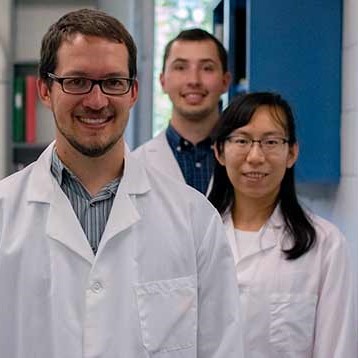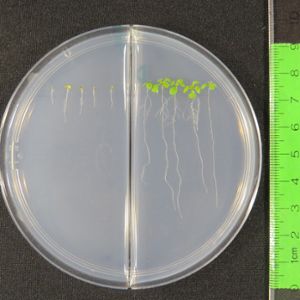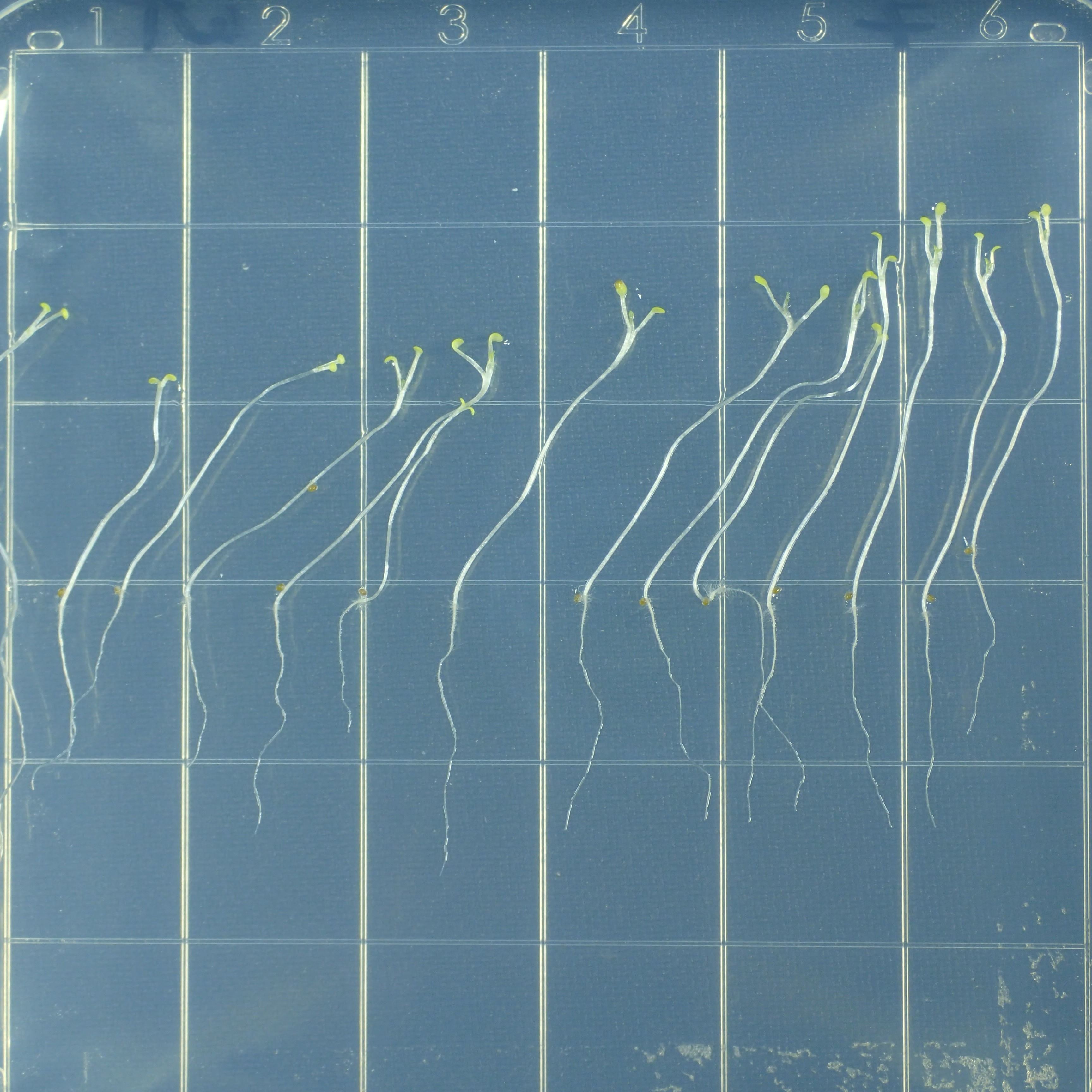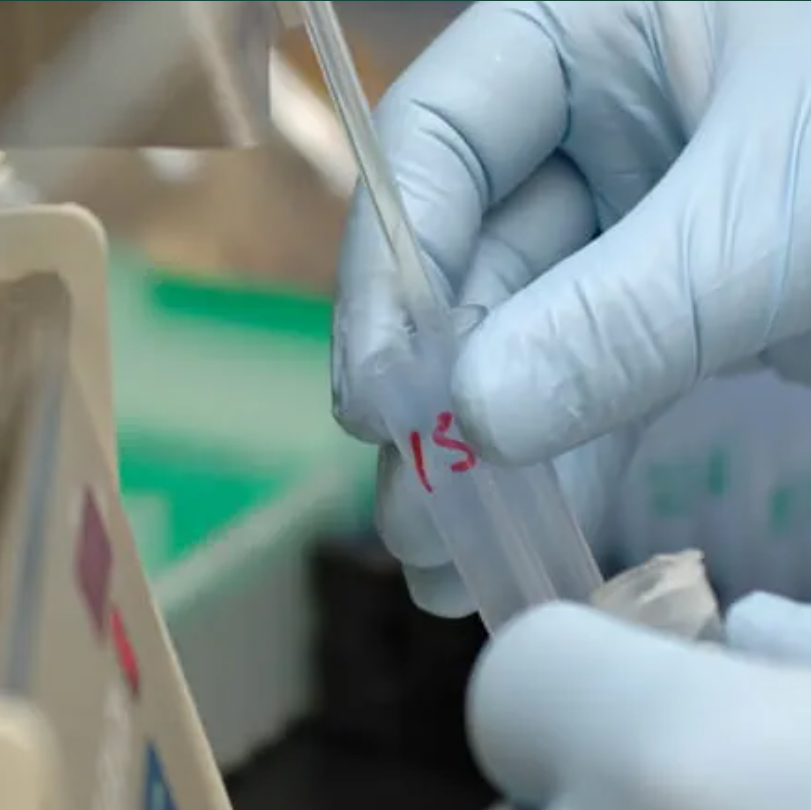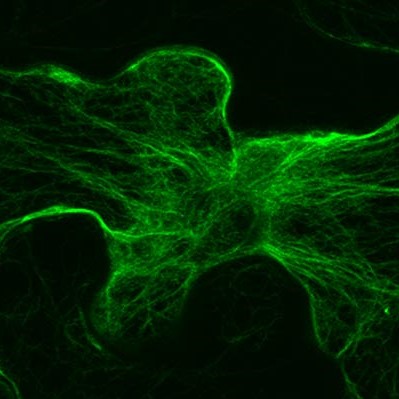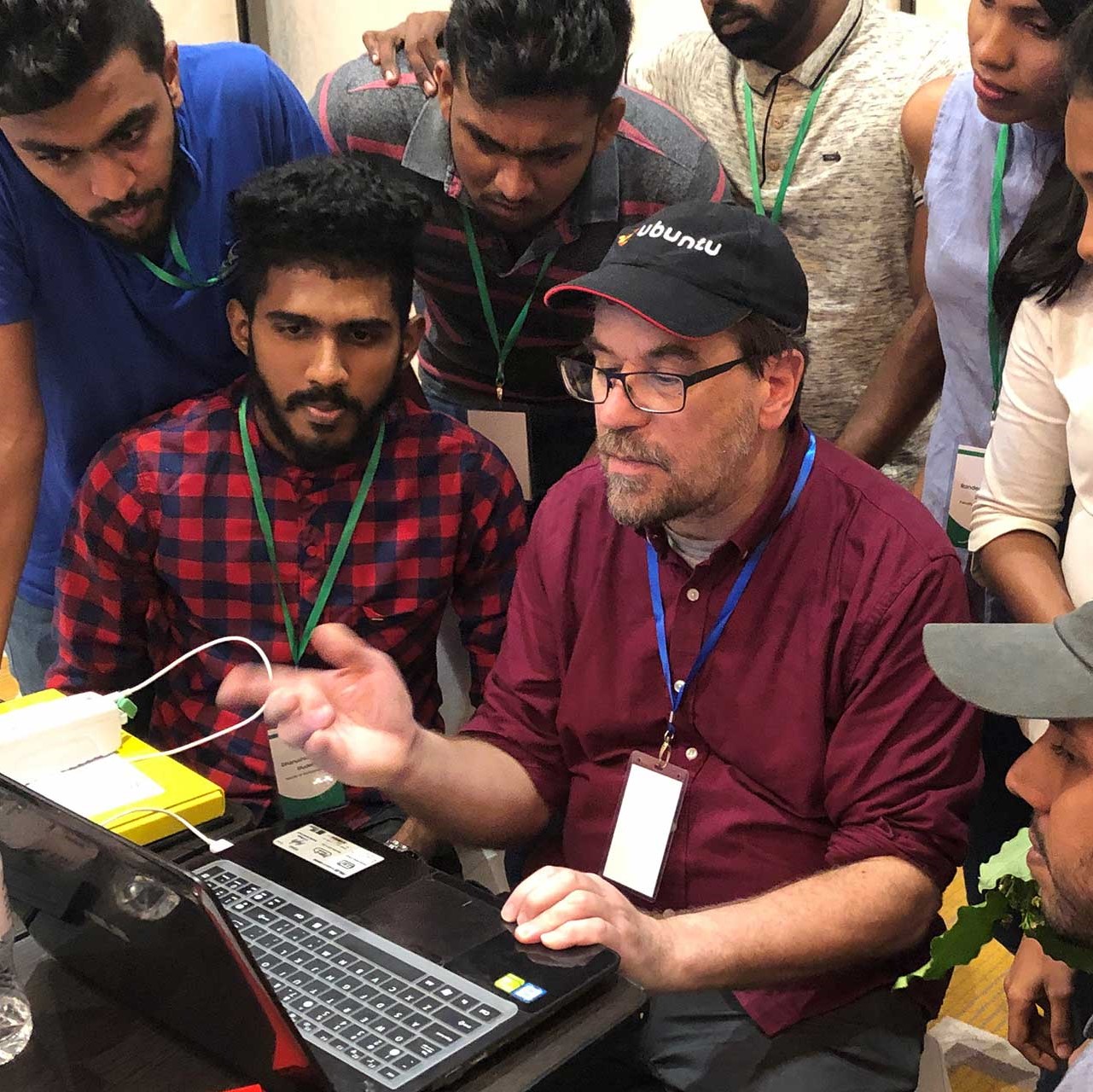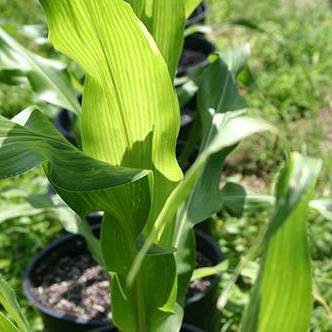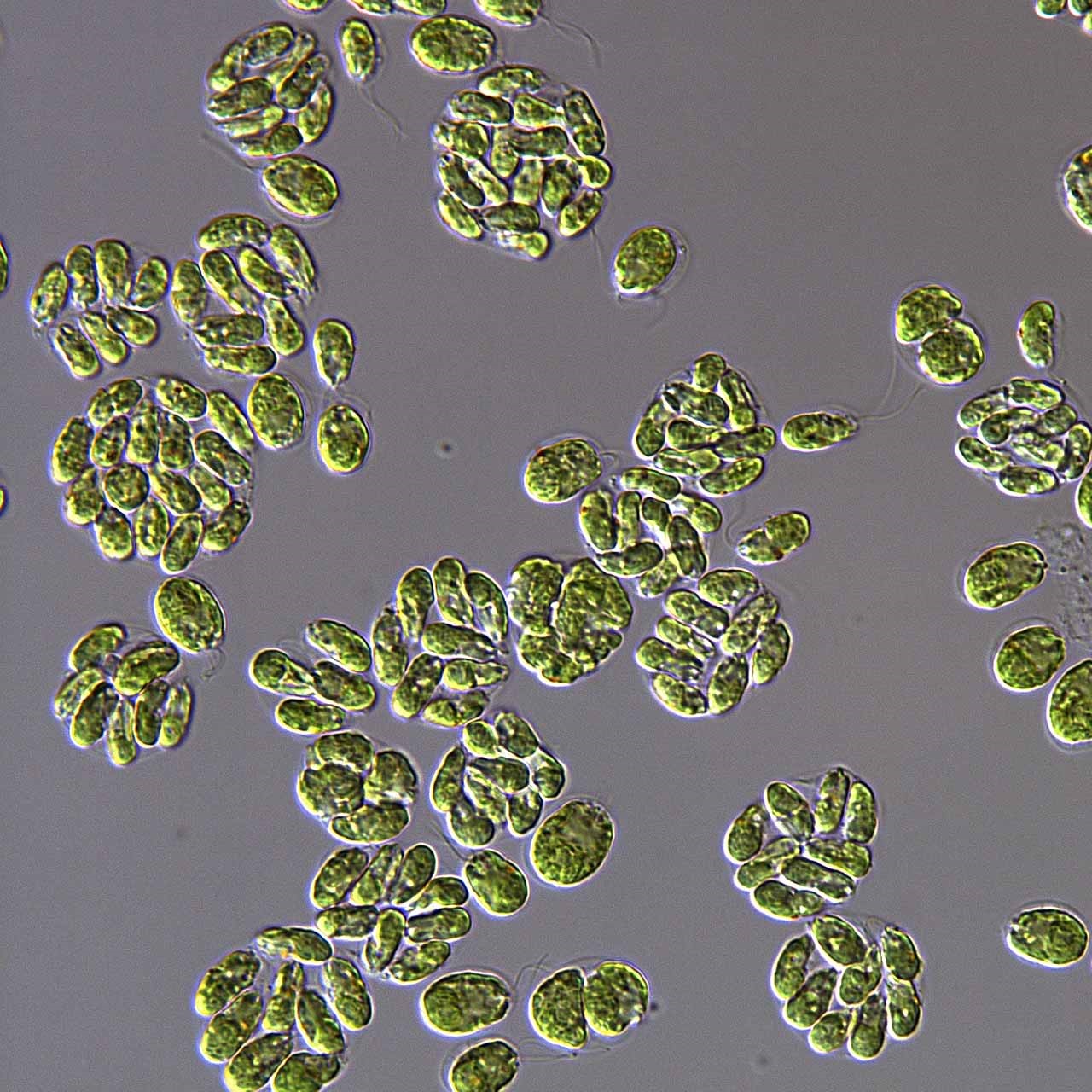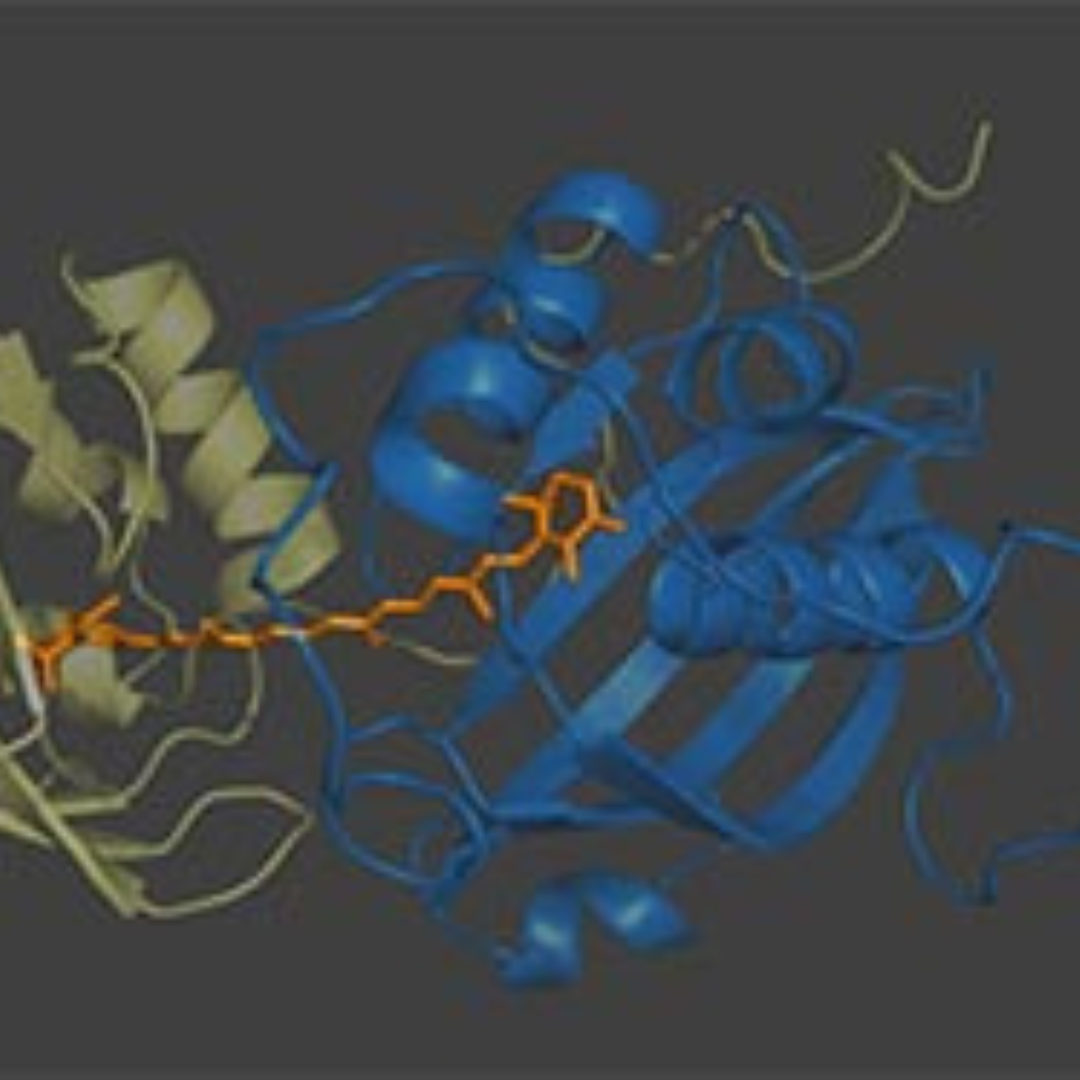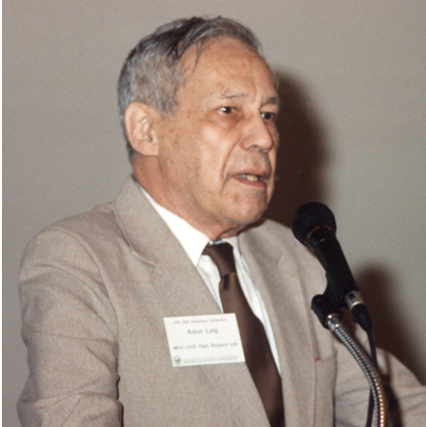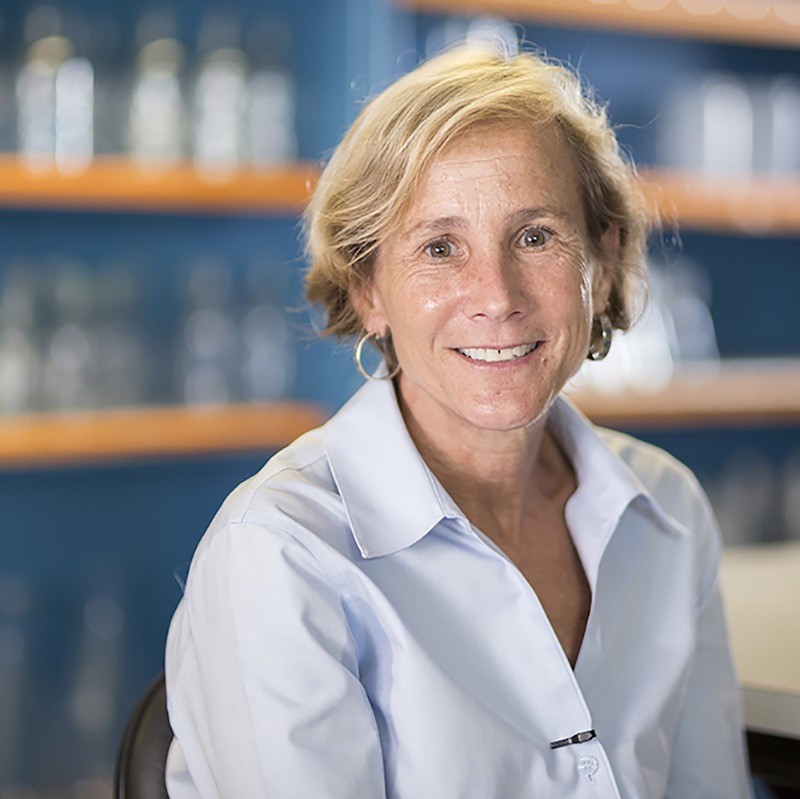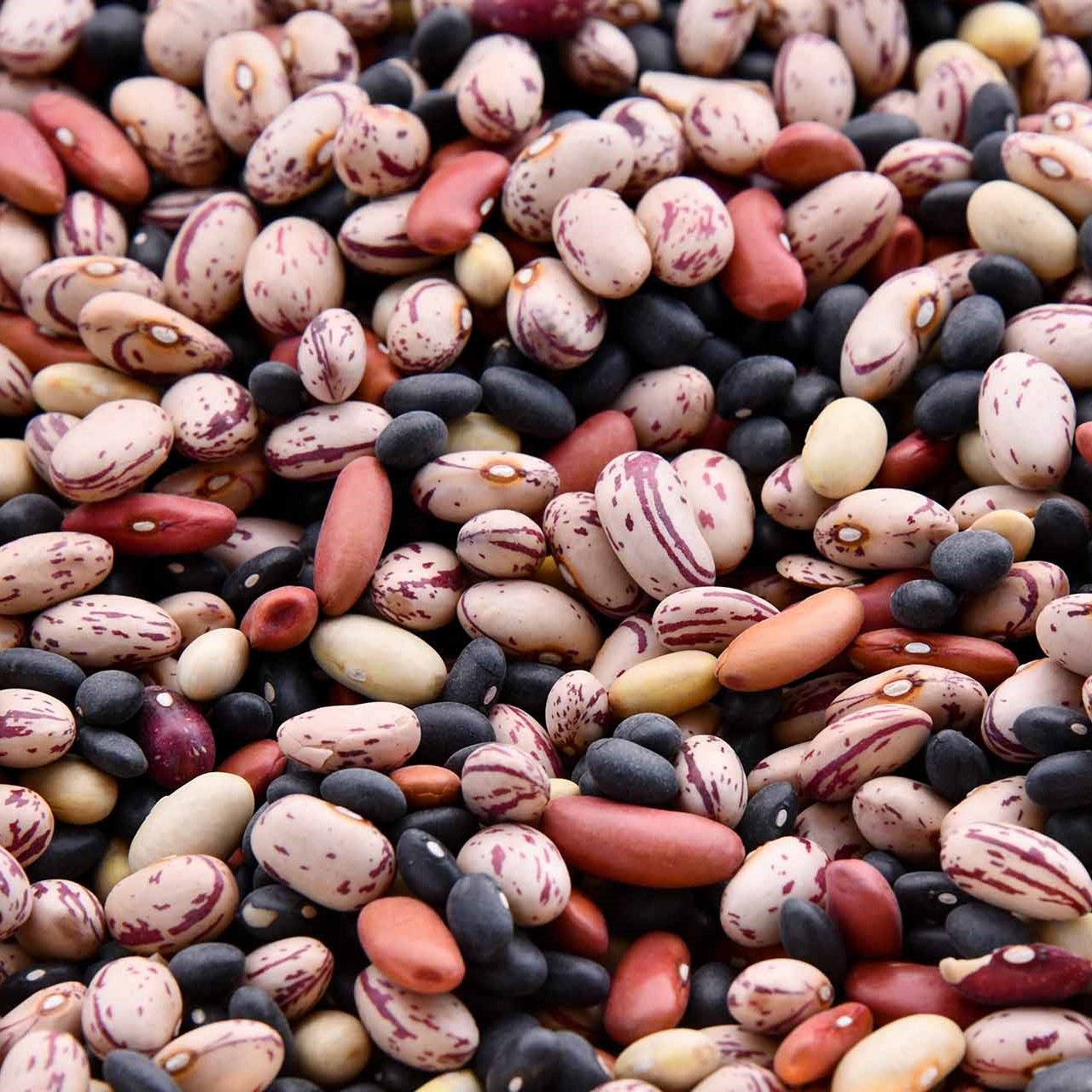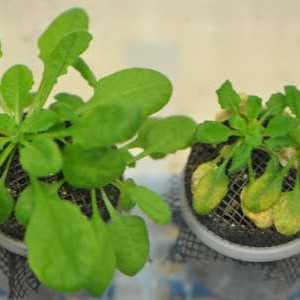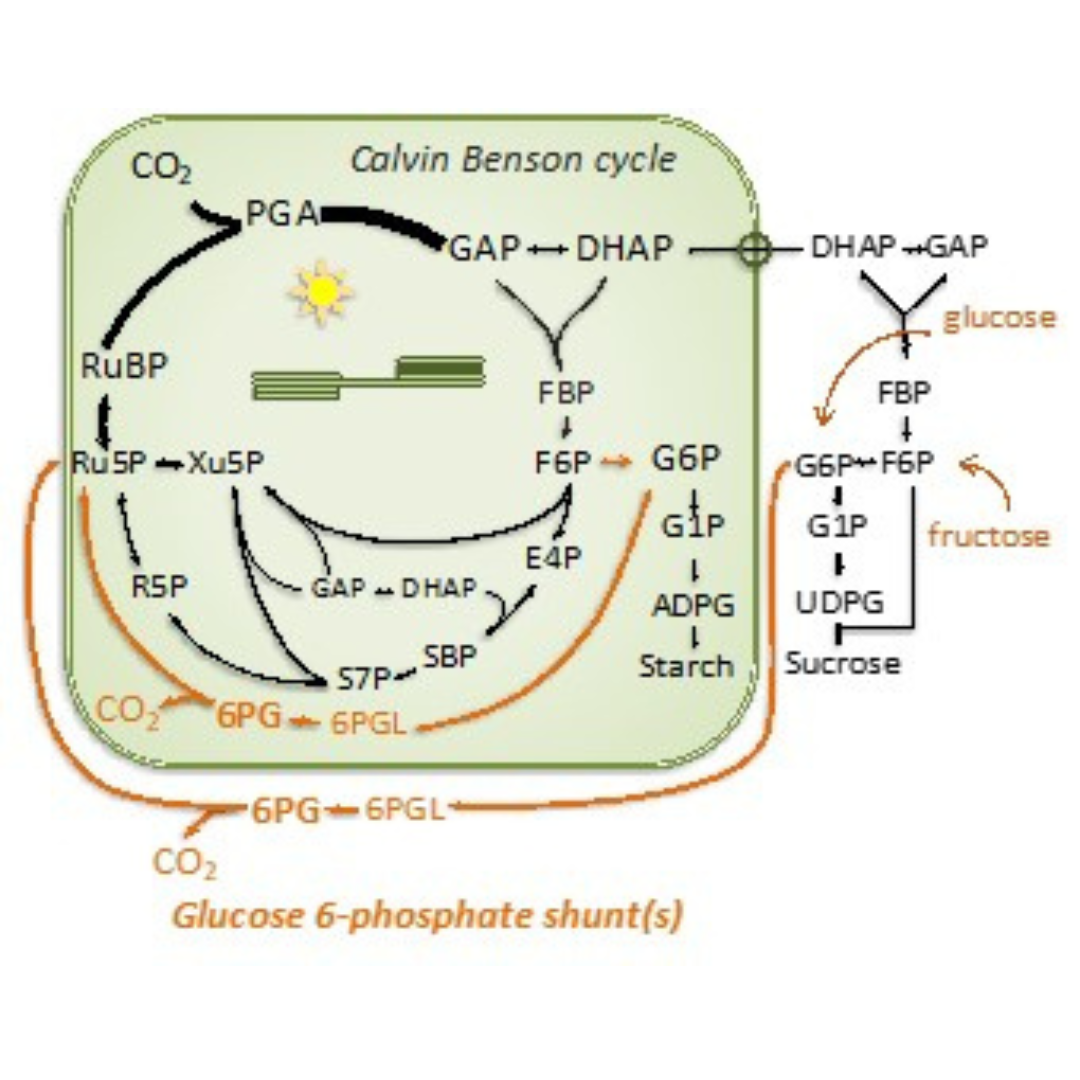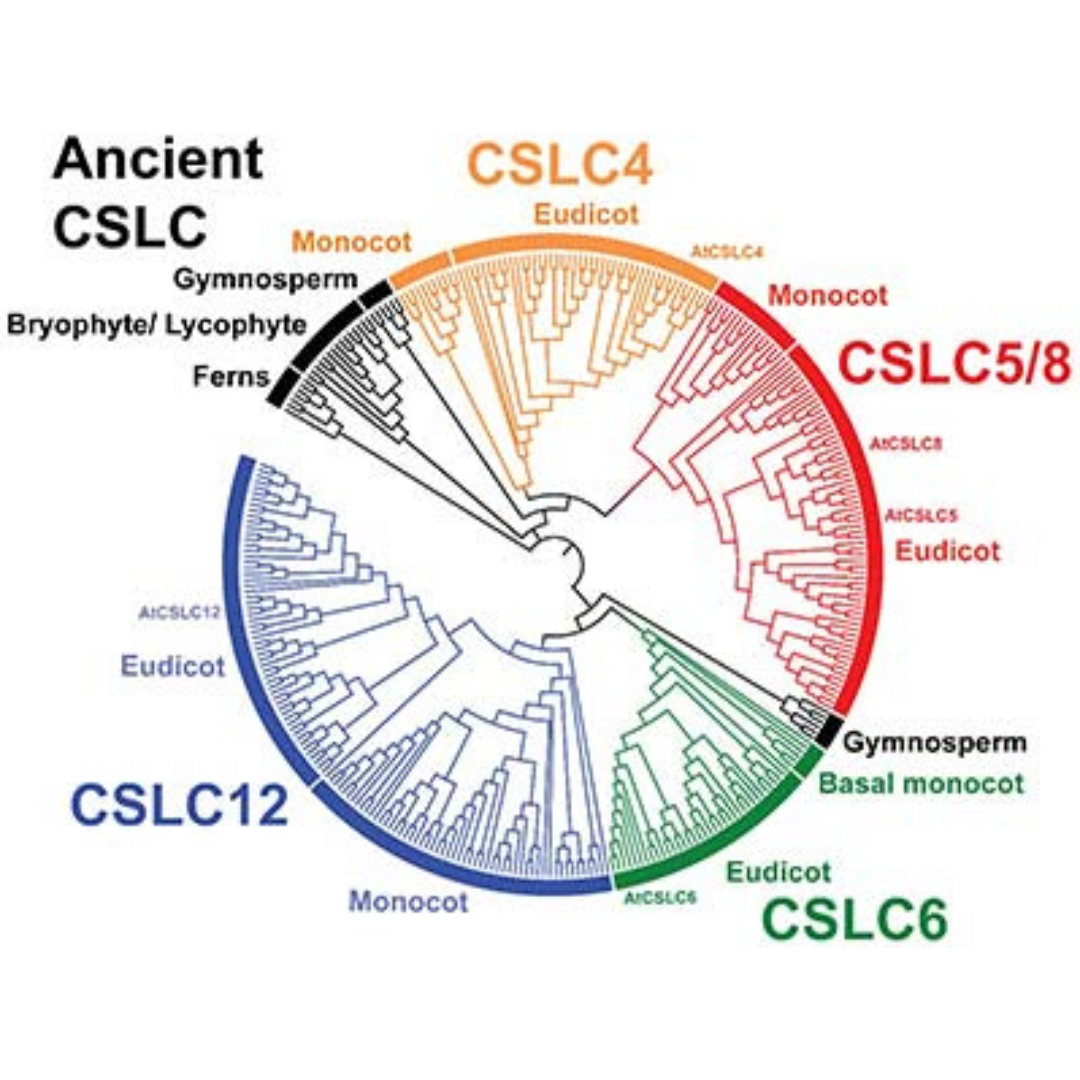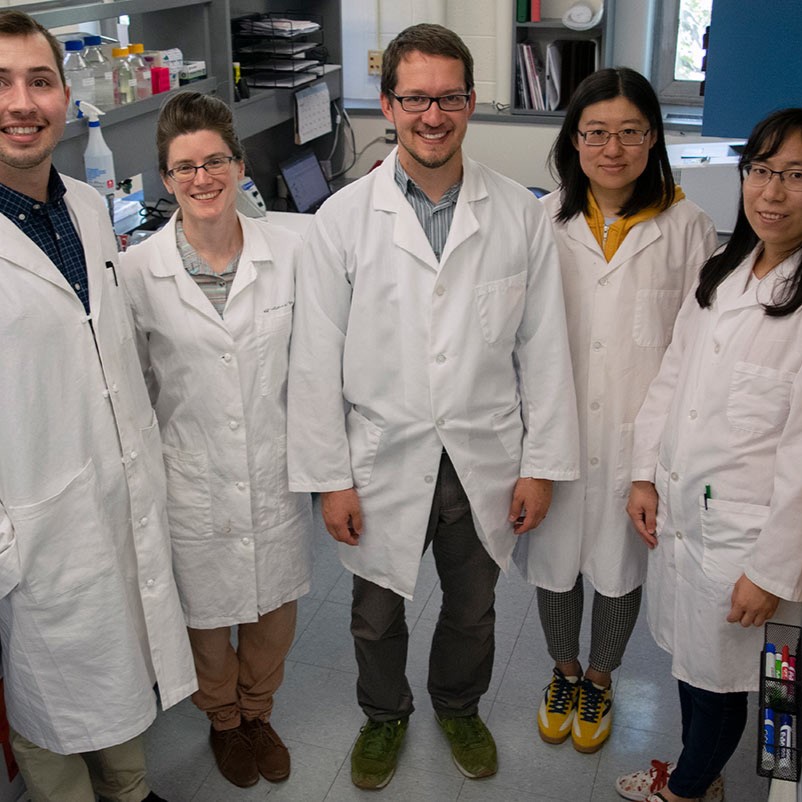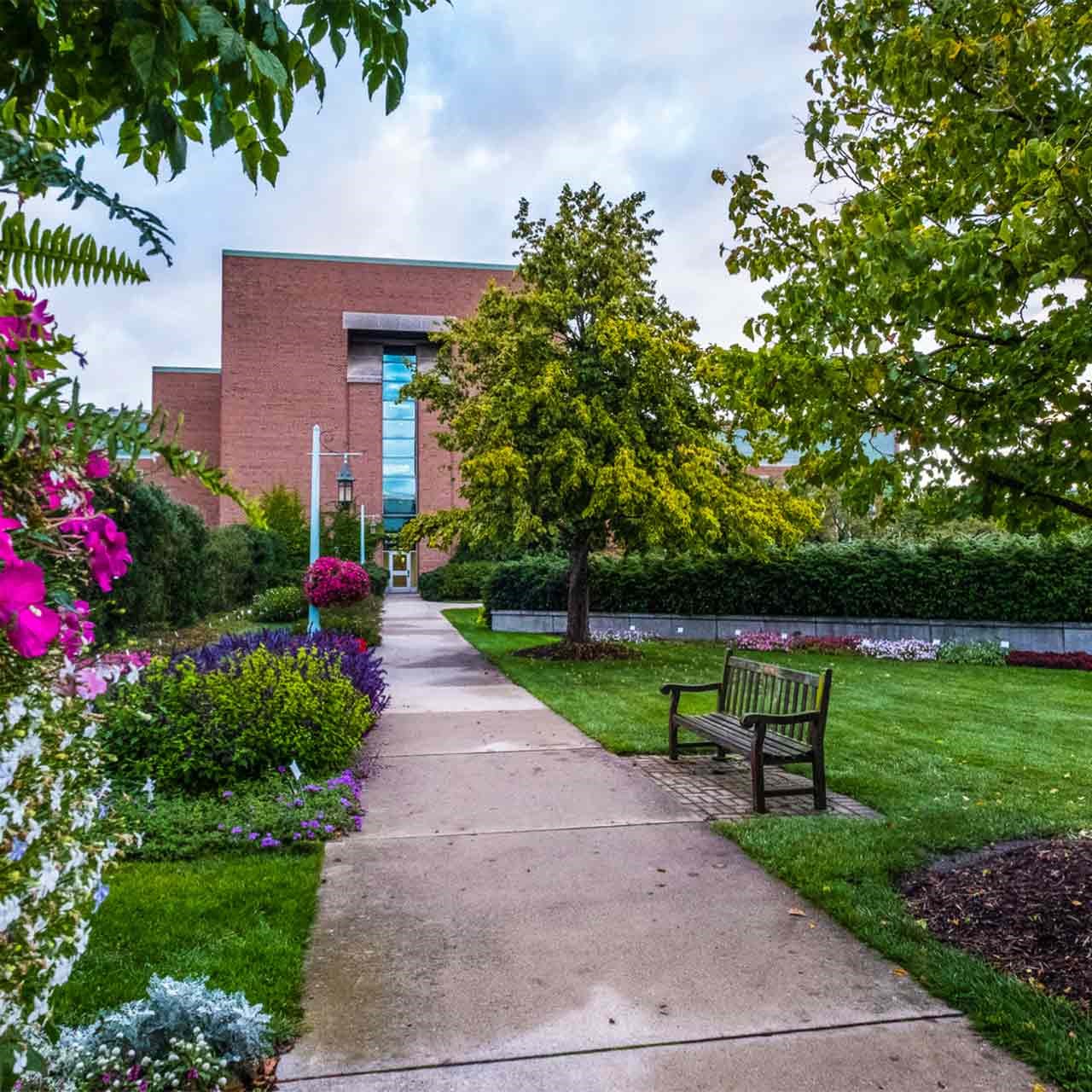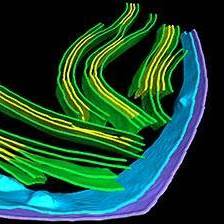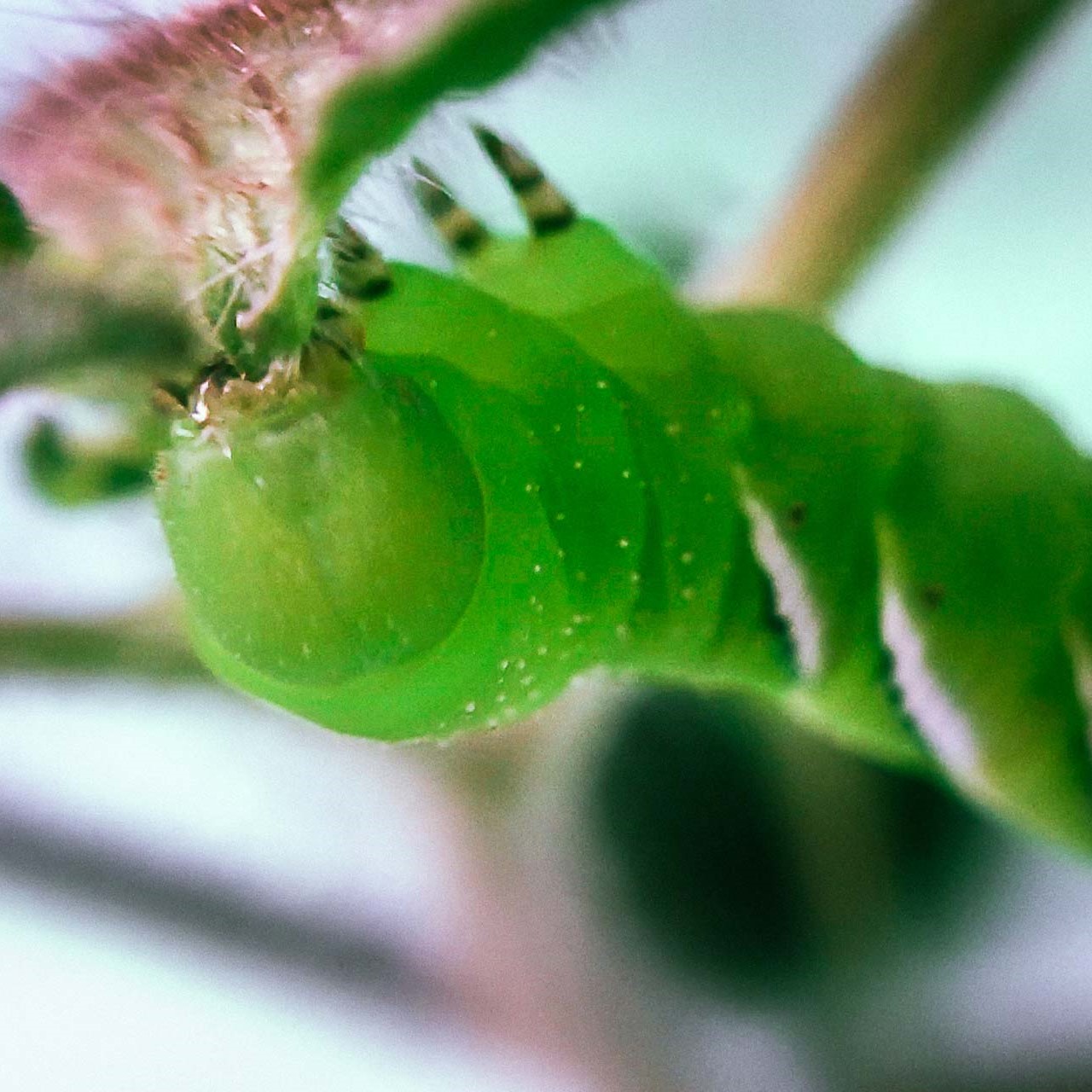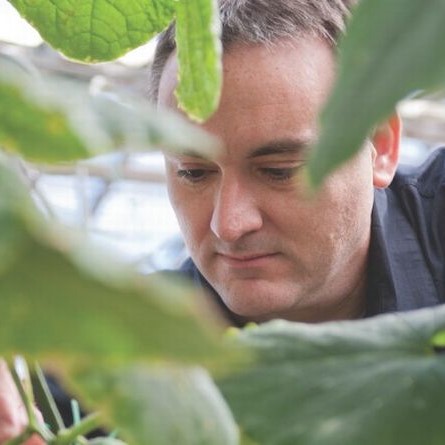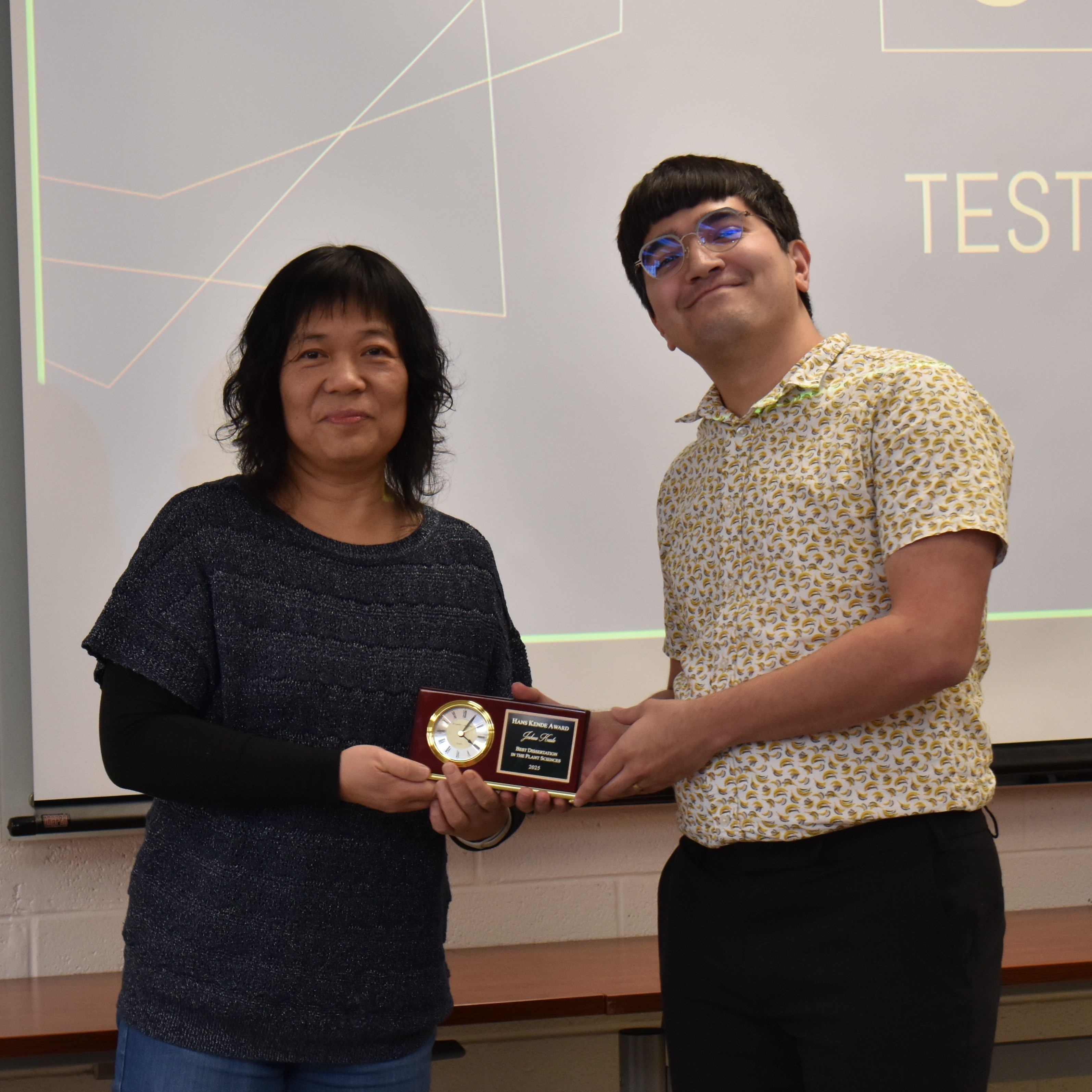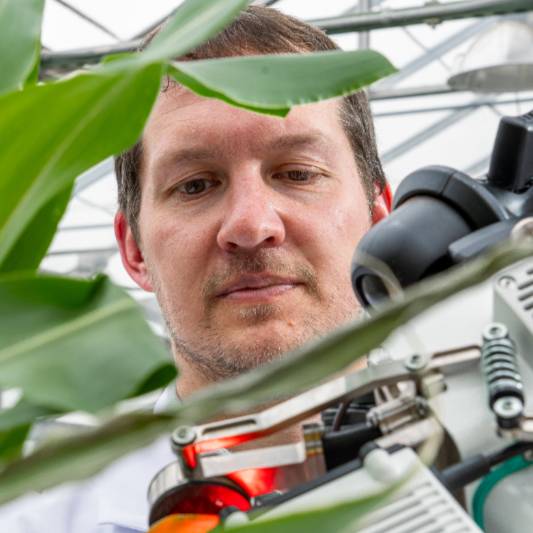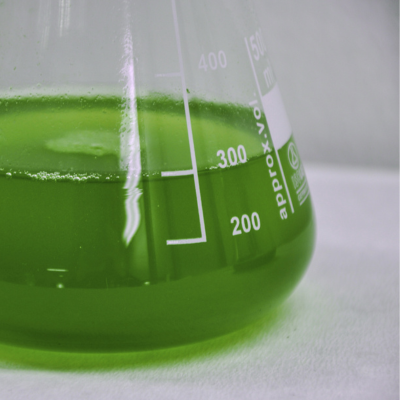News
February 23, 2021
A new study from Michigan State University is shedding light on how plants could potentially become more efficient at photosynthesis. The long-term implications of this research range from improved agricultural productivity to predicting the effects of climate change.
January 15, 2021
Josh Vermaas, the newest addition to the MSU-DOE Plant Research Laboratory faculty body, has begun his assistant professorship this month. Josh is a computational biophysicist whose research interests include developing computational models to better understand membrane processes and plant materials.
December 29, 2020
Michigan State University’s Beronda Montgomery, an MSU Foundation Professor, was one of five individuals nominated by the Union of Concerned Scientists as a 2020 Science Defender. Montgomery was cited for her "incredibly important work . . . to ensure that science benefits the common good.”
December 22, 2020
Every fungus, plant and animal on earth is dependent on their cells’ endoplasmic reticulum—a three-dimensional organelle of protein producing and folding tubules—to grow and survive. Federica Brandizzi, MSU Foundation Professor in the MSU-DOE Plant Research Lab, is using powerful genomics tools and a $1.95 million NIH grant to understand how it works with the aim of treating diseases such as diabetes, Alzheimer’s and cancer more effectively.
December 21, 2020
With the support of NASA, the lab of Federica Brandizzi has been studying how plants survive in space conditions. A new study starts revealing how a plant system – which helps plants manage various types of Earthly stresses, such as extreme heat – might function in space.
December 4, 2020
Christoph Benning and Gregg Howe are two of the four MSU College of Natural Science (CNS) researchers named Highly Cited Researchers, an annual compilation of the global leaders in scientific influence by Clarivate Analytics. The linked article features both scientists.
December 4, 2020
A new study from Michigan State University identifies a missing link which controls plant immunity and plants’ ability to maintain their cytoskeleton – the frame that both gives plant cells their shape and that serves as a highway for materials to move inside these cells.
December 1, 2020
Montgomery was awarded the distinction of Fellow by the American Association for the Advancement of Science. She was recognized for distinguished contributions to plant biology and microbiology, particularly using photobiological analyses to investigate physiological and morphogenic adaptation of photosynthetic organisms.
November 6, 2020
The grant award supports Asian and Pacific universities in their efforts to establish partnerships with renowned foreign universities. Scientists from MSU and Rajarata University will conduct joint activities in the area of smart agriculture, ranging from fundamental genomics and chemistry, to student training and curriculum-based activities.
November 6, 2020
The goal of this year’s fellowship is to provide fellows with real world experience in cloud computing and a good understanding of its capabilities and limitations.
October 26, 2020
Scientists have identified new transcription factor networks and their dynamic activities that protect the endoplasmic reticulum in situations requiring the production of large quantities of proteins.
October 8, 2020
A new study delves into how algae manage cell division processes when they suffer from starvation. The finding has implications for biofuel technologies, given that algae have the potential to become a sustainable source of high value oils.
October 2, 2020
The work is the first structural description of a carotenoid binding protein called C-terminal domain-like carotenoid protein.
September 30, 2020
Kellie Walters and Bryan Ferlez were both recognized as scientists who exemplify the research excellence, ideas, dedication, and vision of former PRL director, Anton Lang.
September 10, 2020
The National Science Foundation Graduate Research Fellowship is one of the country’s most prestigious and competitive awards for graduate students. The program recognizes and supports outstanding graduate students who are pursuing research-based masters and doctoral degrees in fields within NSF’s mission.
September 3, 2020
Cheryl Kerfeld was recently interviewed by the journal BioTechniques. In the video, she discusses bacterial microcompartments and her work on the Proteo Cell Project, an effort to create the first cell without any lipids present.
August 31, 2020
The lab of Thomas D. Sharkey have characterized a sucrose transporter protein found in common beans. The recently discovered protein, called PvSUT1.1, could help us understand how beans tolerate hot temperatures.
August 28, 2020
Sheng Yang He writes about his lab's recent discovery of genes and processes involved in selecting the right microbiome inside plant leaves. The article is featured on The Conversation.
August 25, 2020
Isoprene and photosynthetic metabolism labeling experiments provided evidence that glucose is recycled back into photosynthetic metabolism.
August 11, 2020
Josh Vermaas will join Michigan State University on Jan. 1, 2021, as an assistant professor in the field of computational science. He will share his position between the MSU-DOE Plant Research Laboratory (PRL) and the Department of Biochemistry and Molecular Biology (BMB) in the College of Natural Science.
August 4, 2020
The four-year, $898,946 grant from the National Science Foundation will allow Sharkey to continue his research on the evolutionary pattern of the appearance and loss of isoprene emission among various land plants and the impact of these emissions have on the atmosphere.
August 3, 2020
A new study increases our understanding of the biosynthesis of xyloglucan, one of the most common polysaccharides in plant primary cell walls.
July 16, 2020
This long-from article details how our scientists are working to unlock the secrets of photosynthesis, an effort which might spur an agricultural revolution and lead to innovative energy and industrial technologies. The article appears in Futures, a magazine produced twice per year by Michigan State University AgBioResearch.
July 15, 2020
Du, a former postdoctoral fellow in the lab of Christoph Benning, will start a new position as Assistant Professor in the Department of Molecular Biosciences and Bioengineering at the University of Hawaii at Mānoa, Honolulu.
July 15, 2020
MSU plant biologist Berkley Walker is part of a team of scientists that is using a 3-year, $1.4 million National Science Foundation Molecular and Cellular Biosciences award to explore the intersection between photorespiration and one-carbon metabolism, two plant biochemical processes that are critical to plant growth and human nutrition.
July 6, 2020
The work explores how electrons can move across long distances within biomaterials, such as proteins. Understanding the factors that control electron transfer in a biological context is critical to advances in diverse fields, including bioenergy, biosynthesis and disease.
June 24, 2020
A new paper reveals how nature has come up with solutions for photosynthetic organisms to safely harvest sunlight. The paper is included as a chapter in a new book, Photosynthesis in Algae: Biochemical and Physiological Mechanisms, published by Springer.
June 9, 2020
The aim of the AAAS fellowship program is to connect science with policy makers and to foster a network of science and engineering leaders who understand government and policymaking. Brandon will be placed at the U.S. Department of Energy’s Office of Basic Energy Sciences in Washington D.C..
June 2, 2020
Tomomi will be working for Charles River Labs, located in Mattawan, while Eric will be with Physicians Toxicology in Kalamazoo.
May 29, 2020
The U.S. Department of Energy (DOE) has awarded the Michigan State University-DOE Plant Research Laboratory a three-year (2020-2023), $11.25 million DOE Office of Basic Energy Sciences competitive renewal grant to continue its innovative photosynthesis research.
May 26, 2020
Scientists have established a new method to quantify how much cyanobacteria assimilate carbon in the process of photosynthesis. The method assesses carbon assimilation over a stretch of time. It also better factors in a wider range of environmental variables, such as changing carbon dioxide levels or varying light intensities.
May 14, 2020
A new method to reveal the molecular landscapes of photosynthetic membranes inside green algae cells
A collaboration with Max Planck Institutes in Germany has led to a new visualization approach that produces a topological view of these native membranes.
May 12, 2020
Benning is featured on the U.S. Department of Energy Office of Science's 'First-Person Science' series, where scientists describe how they made significant discoveries over years of research.
May 7, 2020
Michigan State University plant scientist Gregg Howe has been elected to the National Academy of Sciences (NAS). Founded in 1863, the NAS is one of the oldest and most prestigious scientific membership organizations in the United States. Howe joins 10 current and emeritus MSU faculty as members of NAS.
April 24, 2020
The grant to Brad Day and Sheng Yang He will fund research examining plant responses to environmental threats and an outreach program designed to educate the general public on plant research.
April 20, 2020
The former postdoc from the Thomashow lab will join Dr. Wei Li’s lab in Washington D.C. and conduct research to systematically identify critical genes and potential drug targets in brain tumors.
